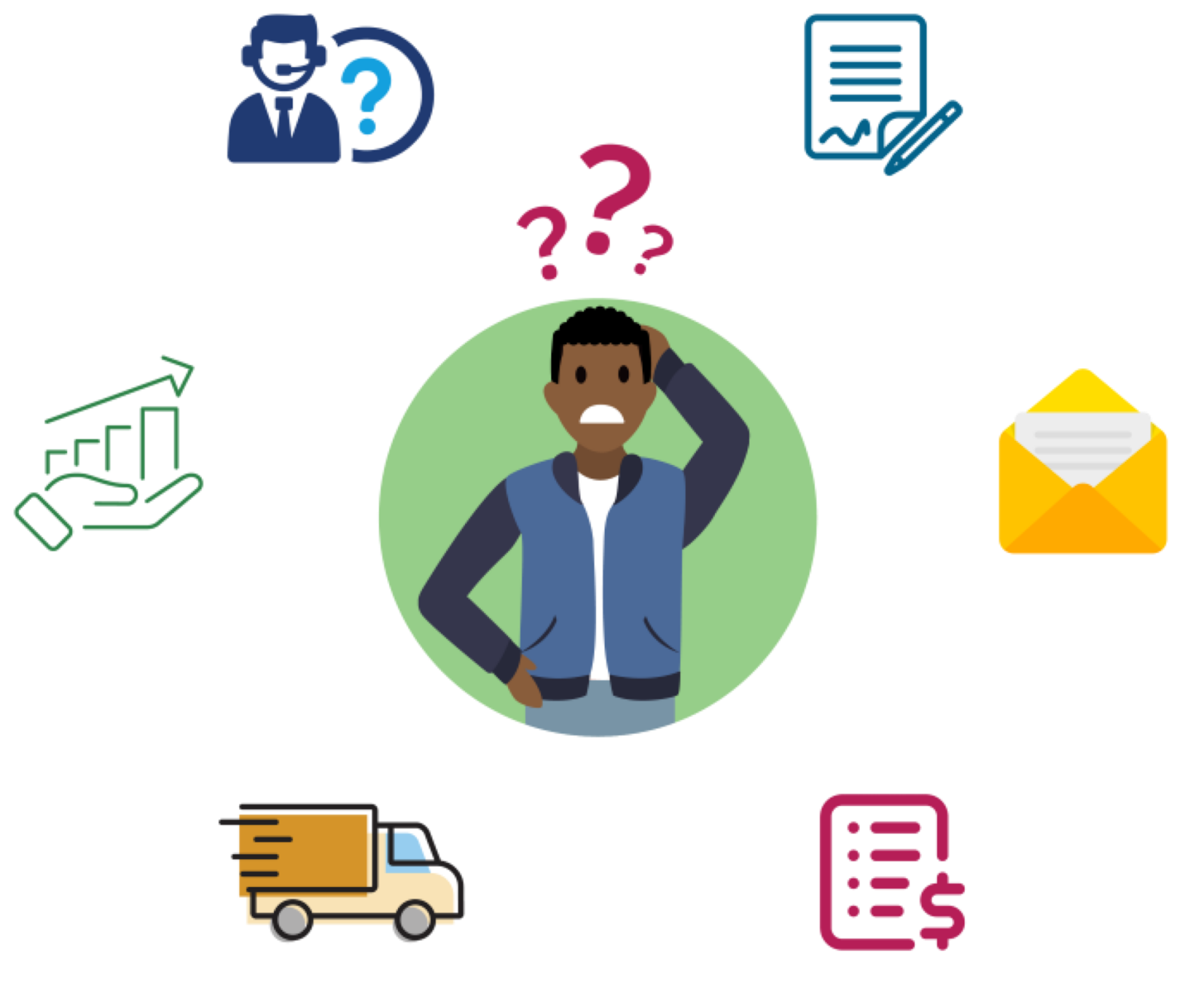Conocer Revenue Cloud
Objetivos de aprendizaje
Después de completar esta unidad, podrá:
- Describir los desafíos en la gestión de la eficiencia de los ingresos.
- Enumerar las expectativas de una solución moderna de gestión de ingresos.
- Describir Revenue Cloud y sus funciones más destacadas.
El ciclo de vida de la generación de ingresos
El ciclo de vida de ventas comienza con la generación de prospectos, en la que el equipo de ventas identifica a un cliente potencial. Luego, el equipo crea una oportunidad para hacer un seguimiento de este cliente, también llamado prospecto. A continuación, un representante de ventas recopila los requisitos del cliente y elabora un presupuesto basado en ellos. Luego, se agregan los precios con descuentos y promociones. Después de que el cliente aprueba el presupuesto, el representante de ventas crea un contrato y todas las partes interesadas lo validan y firman. A continuación, el equipo genera un pedido y el equipo de cumplimiento inicia el cumplimiento del pedido. Finalmente llega el momento de la facturación. El cliente recibe una factura, y paga los productos y servicios. Con el pago, mejora el flujo de caja de la compañía. En resumen, los clientes reciben los productos que pidieron y la compañía obtiene sus ganancias.

Pareciera ser un proceso bien aceitado. ¿Qué podría salir mal?
Desafíos del ciclo de vida de los ingresos
Históricamente, muchas organizaciones utilizaron soluciones puntuales para asistirlas en diferentes aspectos de su trayectoria de ventas. Las soluciones puntuales son aplicaciones personalizadas desarrolladas para un determinado caso de uso. Estas soluciones puntuales satisfacen la necesidad inmediata de un caso de uso particular, pero también presentan varios desafíos.
- Desafíos operativos como retrasos en la determinación de precios y aprobación de contratos, captura de pedidos inexacta y pérdida de ingresos debido a facturación incorrecta.
- Falta de asistencia integral para escenarios de negocio recurrentes, como renovaciones, prorrateo, agrupación de productos y modificaciones de contratos.
- Incapacidad de escalar para satisfacer mayores complejidades, como presupuestos y pedidos de múltiples productos.
- Altos costos operativos debido a la integración de herramientas dispares que no funcionan bien juntas.
- Incapacidad de proporcionar servicios componibles que faciliten la conexión y el uso inmediatos con otros servicios.
El impacto acumulativo de estos desafíos dificulta una experiencia de ventas fluida.

Conozca a José Figueroa, el director de ingresos de InfinitraBytes, proveedor líder en soluciones y productos electrónicos.

José entiende que su equipo enfrenta desafíos y reconoce la necesidad de una solución completa de gestión de ingresos que mejore el flujo de trabajo de ventas. También sabe que el director financiero está interesado en garantizar lo siguiente:
- Que los pedidos sean precisos y se capturen todos los requisitos de facturación.
- Que se capturen datos de ventas precisos para que puedan enviarse a los sistemas financieros de los clientes.
La búsqueda de una solución moderna de gestión de ingresos
Una solución completa de gestión de ingresos permite que las organizaciones gestionen eficazmente las interacciones con los clientes desde la implicación inicial hasta la asistencia posventa y la generación de ingresos.
José está buscando una solución que brinde una experiencia del cliente unificada y procesos fluidos para respaldar todas las siguientes etapas del ciclo de ventas.
- Gestión de catálogo de productos
- Definición del precio del producto
- Configuración de flujos de trabajo de productos
- Elaboración de presupuestos y captura de pedidos
- Gestión del ciclo de vida de los activos
- Gestión de contratos
- Implementación del flujo de trabajo desde el pedido hasta el cobro
- Generación de inteligencia sobre el ciclo de vida de los ingresos
Teniendo en cuenta el crecimiento, una solución de gestión de ingresos debe ampliarse para admitir una mayor cantidad de transacciones y presupuestos más grandes. Además, a medida que la organización mejora su cartera, la solución debe admitir nuevos modelos de negocio, como suscripciones y modelos basados en uso, renovaciones y modificaciones. La compatibilidad con la automatización de procesos, las integraciones específicas de la industria y los factores de cumplimiento también son consideraciones importantes.
Una propuesta de valor única
Revenue Cloud es un paquete unificado de producto a efectivo para compras y ventas OmniCanal. El paquete está diseñado para satisfacer las necesidades de expansión comercial y brindar capacidades de automatización e inteligencia de ingresos. Desarrollada como una plataforma extensible, Revenue Cloud proporciona API componibles para que otros servicios en la nube puedan utilizar su funcionalidad.
A continuación, se presenta una descripción detallada de las capacidades de Revenue Cloud.
Ahora que conoce Revenue Cloud, explórelo con más detalle en la próxima unidad.